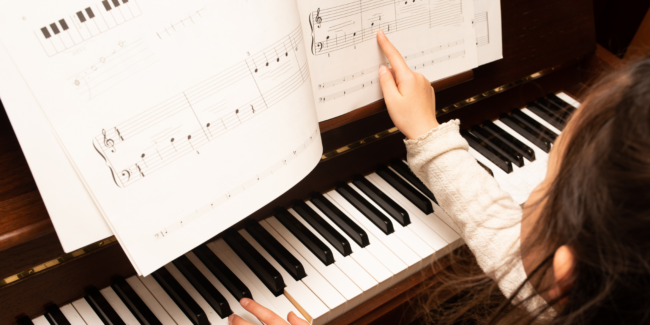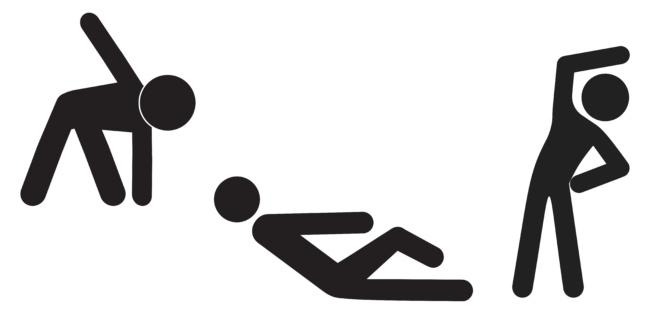Beginner Piano Practice Routine

Looking for a beginner piano practice routine? We have one that’ll make your fingers fall off—just kidding!
The secret to mastering piano is the habit of daily practice.
And you can’t just wing it.
You need a system—a vehicle that takes you from point A to B. From Chopsticks to Beethoven.
You need a routine.
Here’s one we whipped up. It should give you a firm foundation you can add to, subtract from, or modify to suit your practice windows and goals.
Practicing daily.
Without regular practice, you won’t master the necessary skills.
Each person is unique, so find what works best for you. For some beginners, 30 minutes daily is enough, but more ambitious practice routines need at least an hour. e,
Be careful to not overdo it–practicing too many hours a day as a beginner can tire you out, hindering rather than helping your progress. Balance is everything in life and in music.
Handy tip: Write out goals on a vision board to remind you of what’s important, and include motivation for when things get challenging.
Warming up.
5-10 minutes

Musicians need to warm up just like athletes do, and so it is the first part of a beginner piano practice routine. Warming up your hands and body prevents injury and helps you make the most of each session.
Try adding these in at the beginning of each session: :
- Massage your neck.
- Reach your hands towards the ceiling for a few seconds, stretching the sides and back of your body.
- Roll your shoulders forward and backward a few times.
- Shake your hands as if you’re trying to flick water off them.
- Press the palms of your hands together in front of your body, count ten seconds with your fingers pointing upward, then point your fingers away from your body for another ten seconds. Finally, turn them towards your body and hold them for ten.
- Pick one scale and play it with your right hand, then your left hand, and then both.
Keep it interesting and do a different combination of warm-up exercises each day. You’ll find some more Piano Exercises for Beginners in our blog, or you can follow the personalized exercises on the Simply Piano app. Keep it fresh!

Practicing scales and arpeggios.
20 minutes
Twenty minutes isn’t enough time to practice all your scales or the arpeggios of all the chords you know. Pick a different set each day, always including ones you struggle with.
If you’re still learning chords and scales, this is the time during your practice routine to learn a new one.
You can learn piano notes and chords, and scales for beginners from our blog. Knowing and playing scales is an essential foundation for playing the piano. It’s best to practice them at the start of your session when your mind is still sharp.
Analyzing the keys for the music you want to play.
10-20 minutes
Practice sessions are about working on what you’re struggling with, so you can improve. Eventually, you’ll be able to play the entire thing flawlessly.
Start by analyzing your piece. Guess what? You don’t touch the keys during this part of the practice–simply go over each page and consider the following:
- What’s the tempo?
- How loud or soft must you play each section?
- Consider the notes and chords and how long you play them.
- Are there sections you repeat?
Note anything you don’t want to forget once you start playing.
If this isn’t the first time playing this particular piece, review it and remind yourself of the challenging parts. When the details are fresh in your mind, it’s easier to remember them and play the piece better than during your previous practice routine.
Before playing, it’s also helpful to practice specific details, such as chords you’re not familiar with.
Get familiar with hand and finger positions, so it comes naturally once you move on to the next step.

Playing your piece.
5-10 minutes
At last, it’s time to play your piece from start to finish. Go through it slowly if you have to, and play it as best you can–it’s common for new practice music to sound pretty bad at first.
You can play the right hand first and follow it with the left hand. Make notes when you get to difficult sections to know which parts need more work than the rest.
Analyzing and practicing hard parts.
20 minutes
Use your notes while you play and identify which sections require the most work. To play the music the way it should sound, you need to master these parts.
Slow down your tempo for this part. It’s more important to hit the right key than keep up to the beat.
Practice each challenging part slowly. Only move on to the next if you can play it perfectly at the appropriate speed.
If you’re having exceptional difficulty with some parts, isolate those notes and play them repeatedly. After mastering them, do the same with the next set of notes. Finally, connect them and play the entire section.
Doing this daily will play each piece more effortlessly and flawlessly.
Setting goals and tracking progress.
If you fail to plan, you plan to fail.
It’s no different from playing the piano–you need goals to motivate you for what lies ahead.
You also need a plan and should regularly measure how close you are to achieving it to ensure you keep growing.
Make your goals realistic
You don’t want to lose heart because you set the bar too high. To get an idea of some achievable goals, check out books on learning piano for beginners.
Make your goals personal
Do you want to play at a recital in a year, or only play for yourself? Then you may want to master a particular piece by a well-known composer by a specific time.
Discipline is an essential part of a beginner piano practice routine. Commit to incorporating these aspects, and you’ll see the improvement over time.









